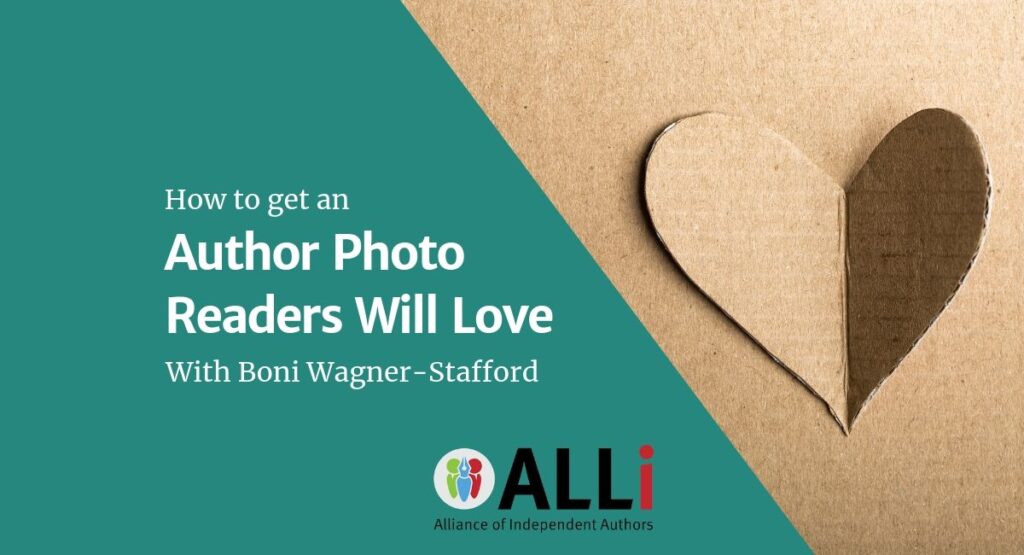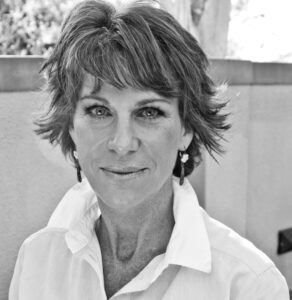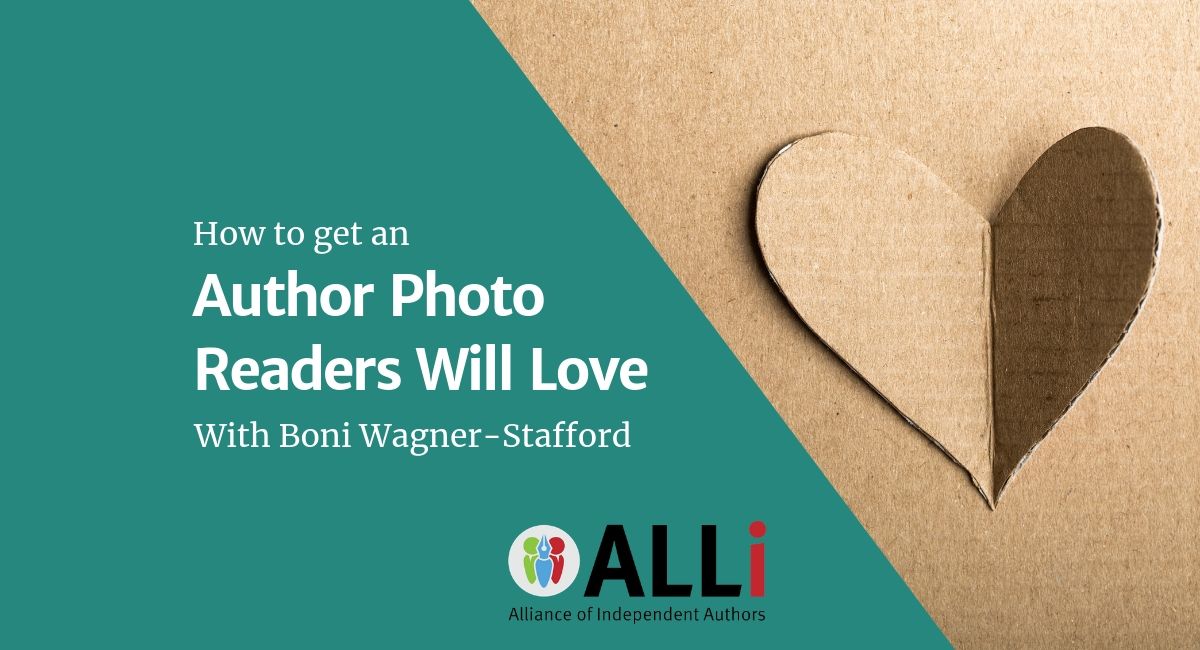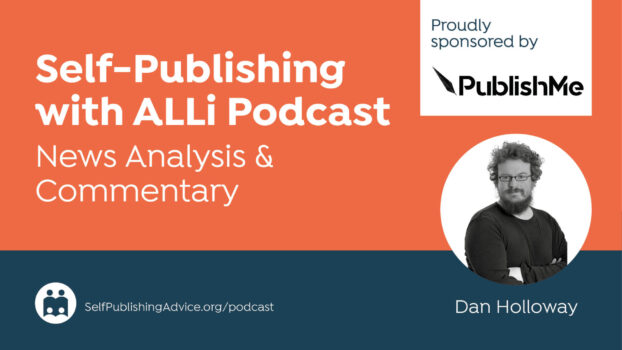 Many indie authors struggle with how to handle their author photo. They’re shy, or modest, or frugal, and don’t want to hire a professional photographer “just” for their author photo. Here’s why Boni Wagner-Stafford, ALLi's communications manager and co-founder of ALLi Partner Member Ingenium Books, believes you should.
Many indie authors struggle with how to handle their author photo. They’re shy, or modest, or frugal, and don’t want to hire a professional photographer “just” for their author photo. Here’s why Boni Wagner-Stafford, ALLi's communications manager and co-founder of ALLi Partner Member Ingenium Books, believes you should.
You’re writing a book for people to read. Which means you have an audience of readers in mind. You want those readers to connect with your book. Whether it’s your memoir, a self-help book, business book, professional development book, an award-worthy piece of journalistic nonfiction, or any one of the sub-genres of fiction, your readers are going to want to connect with you. Especially if they loved your book, they are going to gobble up the “About the Author” section at the back of the book. They might even Google you and see what else they can find out about you online.
A Reader-Author Connection
When I say “connect,” I don’t necessarily mean they’ll pick up the phone. Although if they feel a connection when they look at your awesome author photo, they will be much more inclined to do that. I’m talking about a feeling of connection. Reading your words is one part of it. Seeing the eyes and face of the author whose words they have just spent eight or ten hours reading is another level altogether.
This acknowledgement that the reader wants to connect with you is a valuable two-way street. Do you want readers to look for and buy every other book you have written or will write? Do you want them to hire you for coaching or other services, or to purchase the suite of products you’ve written about after they read your book? If the answer is yes, then you definitely want to include a professional-quality author photo.
Let’s dig a little further into the ramifications of the three main options: no photo, any photo, or a professional photo. And then we’ll talk a little bit about how to get a great professional photo.
No Author Photo
In many cases, it’s not horrible to forgo an author photo. “Let readers focus on the words, rather than on the person who wrote them.” Well, sure. If you don’t include an author photo you don’t have to hire a professional photographer, you don’t have to address the wrinkles or jowls or sharp nose or whatever else you hate about your own image (when did my hair turn from ginger to grey?).
You’ll also remain an enigma to your reader. A disembodied voice. Ask yourself this question: is it easier for you to trust someone when you can look them in the eyes? Without an author photo, you are missing out on a key way that you can build trust with your readers — who are leads and prospects for your author business.
A Non-Professional Photo
You might be tempted to use a favourite personal photo as your author photo. You look younger, or skinnier, or you really like the smile in this one photo.

You may have an emotional attachment to it, like the one Ingenium Books' US-based author Yvonne Caputo had with this photo of her sitting inside a B24 bomber, the same aircraft her father flew in WWII. Since that’s also the subject of her book, an argument could be made that this is a great photo to use. In the case of this photo, there are three main problems: the dark background, the resolution, and the fact that without an explanatory caption, few will know she's sitting in a B24.
Non-professional, personal photos can be spotted a mile away for problems with resolution, composition, extraneous objects that detract the focus, and a whole host of other potential issues. All of which scream, “Amateur!” We may be indie authors, proud to self-publish, but we do not want to give anyone any reason to label our book as sub-par.
Professional Photo
As long as you hire a good photographer (as in, check references and look at the portfolio in advance!) you shouldn't be saddled with any of these amateur issues. Yes, you will have to pay for the service. You will also want to review licensing terms to be sure you can appropriately credit the photographer and legally use the photo in the way you intend. But you’ll end up with a great-quality photo that will help imbue authenticity, credibility, and confidence around your book. That is what you want.
Direction for Your Photographer
Hiring a professional doesn’t mean, for example, that you must resign yourself to a boring corporate-style suit-and-tie shot. Perhaps you want some personality and creativity to show through, or you want a photo that aligns with the theme of your book. You can help ensure you get the results you desire by a little preparation in advance.
- Research and find examples of author photos that you like and dislike. Bring samples to the first meeting with the photographer.
- Be sure you get a photo where readers can see your eyes. This is really important, especially for a business nonfiction book, when you want to build credibility and trust. If you write cloak-and-dagger mysteries this wouldn’t be as important for obvious reasons.
- Consider colour schemes and how the photo might fit with your cover design.
- Request a series of poses or at least more than one. This is partly to give you more to choose from, but also to give you flexibility and options: you might choose one pose for the back cover of your book, and another pose for your media kit or the poster you’re making for your book launch event, and still another for your author webpage.
- Think about the subject of your book and your area of expertise, and then think about scenes, settings, outfits, and props that might work to incorporate into the shoot. If you’re a financial planner, you probably want at least a collar, if not a jacket and tie. But if you’re a drummer, a T-shirt while sitting at your drum kit would be great.
Some Example Author Photos
Let’s use some real-life author-photo examples and talk about why they work.
 Henrik Mondrup
Henrik Mondrup
Henrik, from Denmark, needed a new author photo for his forthcoming book, Achieving Change. He had a perfectly good suit-and-tie headshot, but it was a few years old and didn’t quite exude the level of calm confidence we thought would be best for his book.
We can see Henrik’s face and eyes. He has an open and relaxed body position, and he looks approachable and confident at the same time. This is a great author photo.
 Yvonne Caputo
Yvonne Caputo
Once Yvonne realized her B24 navigator’s seat photo wasn’t going to be ideal as her author photo, she set out to hire a photographer and the results show. She’s got two settings with different colour schemes for a bit of flexibility.
Again, we can see Yvonne’s face and eyes, her body language is relaxed and comfortable, and she looks approachable and open. This also has the advantage of having a colour scheme that blends well with the cover design of her forthcoming book, Flying With Dad.
 Lauren Clucas
Lauren Clucas
As a South African relationship counsellor whose book, Wanted, is about relationships, Lauren opted for closer framing that really lets you connect with her eyes and face. Establishing trust is key for Lauren, at a more intimate level than is necessary for Yvonne’s memoir or Henrik’s book about creating digital learning courses.
So before you decide whether to skip including an author photo, and before you make a mistake on which photo to use, think through your original objectives for you and your book. You’ll soon find that it will be clear which option will help you achieve your goals and objectives. My bias is that we indie authors should put our best foot forward and stand up tall, claiming our book by including the best possible author photo.
Before you make a mistake on a sub-par #authorphoto, think it through #indieauthor #iartg #selfpub @ingeniumbooks Share on XOVER TO YOU
What's your take on getting a professional author photo? Is there room for home-taken quirky photos? Add your experience and advice below — we'd love to hear it.




